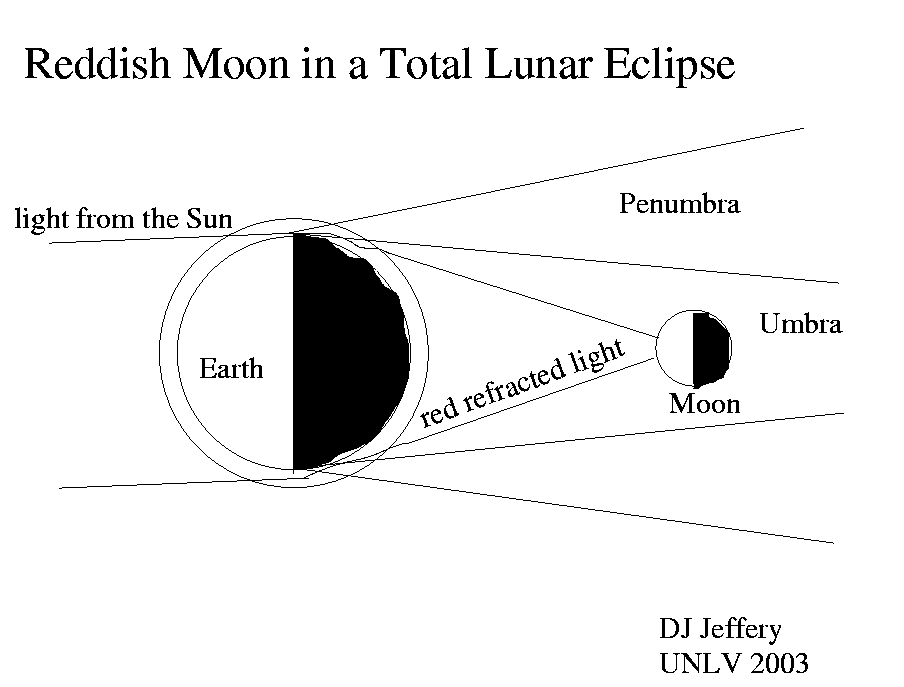
Caption: The explication of the reddening of the Moon in a total lunar eclipse.
Features:
- As light rays
travel through the Earth's atmosphere
they are progressively reddened by the preferential scattering out of
blue
light.
The out scattering is, of course, the cause of the
blue sky.
Obviously, light rays that beam most directly on the Earth are least reddened and those that traverse the Earth's terminator are most reddened: hence the redness of sunrise and sunset.
- Thus, the light rays
that bend around the Earth
due to refraction
in traversing the
Earth's atmosphere
are reddened.
Because the change in
Earth's atmosphere
density is
continuous and NOT sharp (as at a
matter interface),
the refraction happens
continuously in passing through the
Earth's atmosphere and
NOT at a sharply defined layer.
- The refracted
light rays
can travel into the
Earth's umbra
and give the totally eclipsed Moon
a reddish hue in
light
reflected from the
Moon to the
Earth.
Recall, NO straight line light rays from the Sun can reach the Moon when it is inside the Earth's umbra.
- The reddened Moon
is sometimes called a
blood moon, but
this a modern term, NOT a traditional one---in fact, it's a bunch of nonsense.
- Reddened color of the Moon in a
total lunar eclipse
depends on the
Earth atmospheric conditions at the
Earth's
terminator: the
Earth's
day-night
line
which is also the limb of
the Earth as seen
from the Moon.
These conditions will affect the overall brightness and will cause uneven
reddening.
If the terminator
is very cloudy, there may be NO obvious reddening and the
Moon can look quite dim.
The location of the Moon in the Earth's umbra is another factor: the closer the Moon is the center the dimmer it will be all other things being equal and off the center there is a greater tendency for uneven illumination by the refracted light rays.
- See Eclipse keywords below (local link / general link: eclipse_keywords.html).
Image link: Itself.
Local file: local link: lunar_eclipse_redden.html.
File: Eclipse file: lunar_eclipse_redden.html.